OMF International is an international and interdenominational Evangelical Christian missionary society with an international centre in Singapore. It was founded in Britain by Hudson Taylor on 25 June 1865.
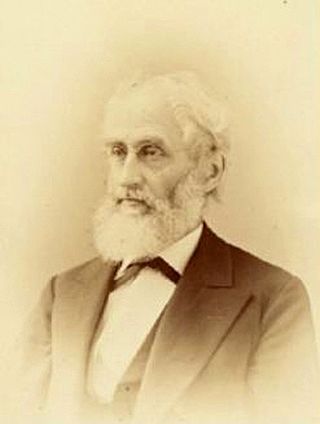
Samuel Wells Williams was a linguist, official, missionary and Sinologist from the United States in the early 19th century.

Griffith John was a Welsh Christian missionary and translator in China. A member of the Congregational church, he was a pioneer evangelist with the London Missionary Society (LMS), a writer and a translator of the Holy Bible into the Chinese language.

Frederick William Baller was a British Protestant Christian missionary to China, Chinese linguist, translator, educator and sinologist.

Joseph Edkins was a British Protestant missionary who spent 57 years in China, 30 of them in Beijing. As a Sinologue, he specialised in Chinese religions. He was also a linguist, a translator, and a philologist. Writing prolifically, he penned many books about the Chinese language and the Chinese religions especially Buddhism. In his China's Place in Philology (1871), he tries to show that the languages of Europe and Asia have a common origin by comparing the Chinese and Indo-European vocabulary.
The Protestant Episcopal Church Mission was a Christian missionary initiative of the Episcopal Church that was involved in sending and providing financial support to lay and ordained mission workers in growing population centers in the west of the United States as well as overseas in China, Liberia and Japan during the second half of the 19th Century.
English Presbyterian Mission was a British Presbyterian missionary society that was involved in sending workers to countries such as China during the late Qing Dynasty.
Robert Henry Mathews (1877–1970) was an Australian missionary and Sinologist, best known for his 1931 A Chinese-English Dictionary: Compiled for the China Inland Mission by R. H. Mathews, which was subsequently revised by Harvard University Press in 1943. He served with the China Inland Mission from 1906, before retiring to Australia in 1945.
Medical missions in China by Protestant and Catholic physicians and surgeons of the 19th and early 20th centuries laid many foundations for modern medicine in China. Western medical missionaries established the first modern clinics and hospitals, provided the first training for nurses, and opened the first medical schools in China. Work was also done in opposition to the abuse of opium. Medical treatment and care came to many Chinese who were addicted, and eventually public and official opinion was influenced in favor of bringing an end to the destructive trade. By 1901, China was the most popular destination for medical missionaries. The 150 foreign physicians operated 128 hospitals and 245 dispensaries, treating 1.7 million patients. In 1894, male medical missionaries comprised 14 percent of all missionaries; women doctors were four percent. Modern medical education in China started in the early 20th century at hospitals run by international missionaries.
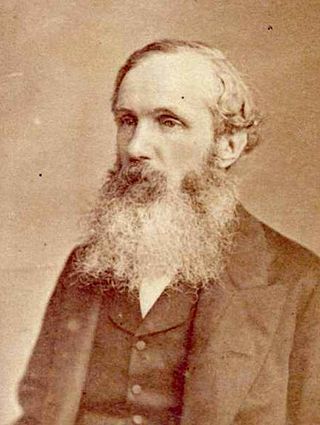
Carstairs Douglas was a Scottish missionary, remembered chiefly for his writings concerning the Southern Min language of Fujian, in particular his Chinese–English Dictionary of the Vernacular or Spoken Language of Amoy.

The Chinese Baptist Convention is a Baptist Christian denomination in Taiwan and the territories administered by the Republic of China.
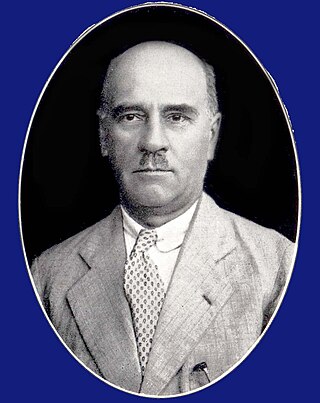
John Lawrence Goheen was an American missionary, educator and administrator, agriculturist, social worker, and writer who spent most of his career working in India. He made a major contribution to literacy through the Bombay Literacy Campaign of 1939. He established Adult Education Associations in various parts in India with a slogan "Every home a literate home". He promoted religious organizations for literacy conferences.

Sir William James Wanless FACS was a Canadian-born surgeon, humanitarian and Presbyterian missionary who founded a medical mission in Miraj, India in 1894 and led it for nearly 40 years. As part of this mission, Dr. Wanless founded Maharashtra's first missionary medical school in 1897, and helped to establish a leprosy sanatorium as well as a tuberculosis hospital, now known as the Wanless Chest Hospital.

A dudou is a traditional Chinese form of the bodice, originally worn as an undershirt with medicinal properties. With the opening of China, it is sometimes encountered in Western and modern Chinese fashion as a sleeveless shirt and backless halter-top blouse.

A Syllabic Dictionary of the Chinese Language: Arranged According to the Wu-Fang Yuen Yin, with the Pronunciation of the Characters as Heard in Peking, Canton, Amoy, and Shanghai or the Hàn-Yīng yùnfǔ 漢英韻府, compiled by the American sinologist and missionary Samuel Wells Williams in 1874, is a 1,150-page bilingual dictionary including 10,940 character headword entries, alphabetically collated under 522 syllables. Williams' dictionary includes, in addition to Mandarin, Chinese variants from Middle Chinese and four regional varieties of Chinese, according to the 17th-century Wufang yuanyin 五方元音 "Proto-sounds of Speech in All Directions".
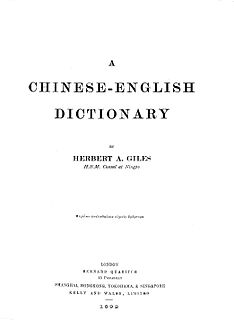
A Chinese–English Dictionary (1892), compiled by the British consular officer and sinologist Herbert Allen Giles (1845–1935), is the first Chinese–English encyclopedic dictionary. Giles started compilation after being rebuked for criticizing mistranslations in Samuel Wells Williams' (1874) A Syllabic Dictionary of the Chinese Language. The 1,461-page first edition contains 13,848 Chinese character head entries alphabetically collated by Beijing Mandarin pronunciation romanized in the Wade–Giles system, which Giles created as a modification of Thomas Wade's (1867) system. Giles' dictionary furthermore gives pronunciations from nine regional varieties of Chinese, and three Sino-Xenic languages Japanese, Korean, and Vietnamese. Giles revised his dictionary into the 1,813-page second edition (1912) with the addition of 67 entries and numerous usage examples.
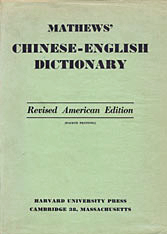
A Chinese–English Dictionary: Compiled for the China Inland Mission by R. H. Mathews or Mathews' Chinese–English Dictionary, edited by the Australian Congregationalist missionary Robert Henry Mathews (1877–1970), was the standard Chinese–English dictionary for decades. Mathews originally intended his dictionary to be a revision of Frederick W. Baller's out-of-print An Analytical Chinese–English Dictionary, but ended up compiling a new dictionary. Mathews copied, without acknowledgment, from the two editions of Herbert Giles's A Chinese–English Dictionary.

Teochew Romanization, also known as Swatow Church Romanization, or locally Pe̍h-ūe-jī, is an orthography similar to Pe̍h-ōe-jī used to write the Chaoshan dialect. It was introduced by John Campbell Gibson and William Duffus, two British missionaries, to Swatow in 1875.















